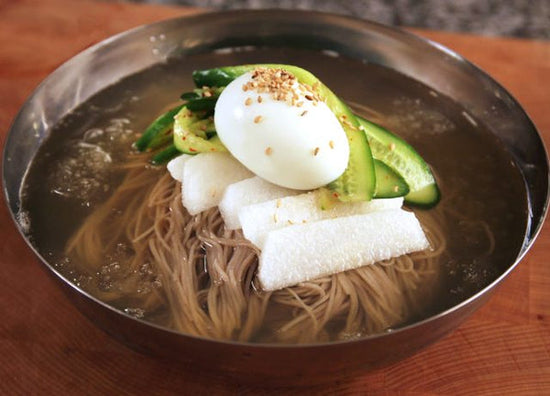Palatial Gems: Must-Visit Palaces in Seoul

Seoul, the vibrant capital of South Korea, is a city that beautifully blends its rich history with modernity. As you wander through its bustling streets, you'll be captivated by the seamless integration of traditional Korean culture with cutting-edge technology and contemporary design.
Amidst this dynamic metropolis, the palaces of Seoul emerge as magnificent reminders of the city's glorious past, transporting visitors to an era of grandeur and elegance.
These palatial gems offer a glimpse into the legacy of the Joseon Dynasty, which ruled Korea for over five centuries. The palaces served as the residence of royalty, the epicenter of political affairs, and the canvas for artistic and architectural masterpieces. In this article, we will journey through the five must-visit palaces in Seoul, delving into their historical significance and unraveling their captivating experiences.
Must-Visit Palaces in Seoul:
Gyeongbokgung Palace: A Royal Haven
Gyeongbokgung Palace, the largest and most iconic palace in Seoul, was constructed in 1395, marking the beginning of the Joseon Dynasty. It served as the primary residence of the royal family and the seat of government for centuries. The palace was meticulously designed, following the principles of geomancy to harmonize with the natural surroundings.
Unfortunately, much of the palace was destroyed during the Imjin War in the 1590s. However, during the reign of King Gojong (1852-1919), the restoration of the palace buildings revived the palace to its former glory.
Exploring the grand halls, pavilions, and serene gardens is a sensory treat. Visitors to Gyeongbokgung Palace can witness the Changing of the Guard ceremony, a vibrant display of traditional attire and ancient military practices. The picturesque Gyeonghoeru Pavilion, where royal banquets were held, offers a glimpse into the luxury of the royal court. Take advantage of the National Palace Museum and the National Folk Museum within the palace grounds, which provide valuable insights into Korean culture.
Changdeokgung Palace: A UNESCO World Heritage Site
Changdeokgung Palace, built in 1405, is another masterpiece of the Joseon Dynasty and a UNESCO World Heritage Site. Its unique feature lies in its seamless integration with the surrounding nature. The palace was meticulously planned to coexist harmoniously with the adjacent Changgyeonggung Palace and the Jongmyo Shrine.
The highlight of Changdeokgung Palace is its enchanting secret garden, Huwon. This serene oasis spans over 78 acres and features beautiful landscapes, including lotus ponds, pavilions, and meandering paths. Exploring Huwon is like stepping into a hidden realm of tranquility. The Biwon Tour provides an exclusive glimpse into the palace's secret corners, revealing the royal family's daily lives.
Key architectural landmarks of Changdeokgung Palace include the Donhwamun Gate, which marks the entrance to the palace; the Injeongjeon Hall, where essential state affairs took place; and the Buyongjeong Pavilion, known for its whimsical beauty. Each structure tells a story of the dynasty's power and artistic finesse.
A visit to Changdeokgung Palace and its secret garden, Huwon, is an immersive experience that transports visitors to tranquility and beauty. It allows them to appreciate the architectural splendor of the palace, explore hidden corners that were once exclusive to the royal family, and witness the profound connection between the Joseon Dynasty and the natural world.
Deoksugung Palace: A Blend of East and West
Deoksugung Palace, one of Seoul's five remaining royal palaces, holds historical significance as it witnessed the final years of the Joseon Dynasty. Located in downtown Seoul, the palace uniquely blends traditional Korean and Western architectural styles. It served as a temporary residence for King Seonjo during the Japanese invasion and later became the primary residence of King Gojong, who proclaimed the establishment of the Daehan Empire.
Under Japanese colonization, Deoksugung Palace underwent significant transformations. It was converted into a public park, and its size and number of buildings were drastically reduced. Despite these changes, the palace still stands as a symbol of Korea's cultural heritage and offers visitors a glimpse into its intriguing history.
Today, visitors to Deoksugung Palace can explore its grounds and marvel at the fusion of traditional Korean and Western architectural elements. The palace provides a fascinating juxtaposition of styles, from the intricately designed Korean traditional complex to the neoclassical Western-style buildings. Stepping into Deoksugung Palace immerses one in Korea's rich history as one walks the same paths once trodden by kings and emperors and gains a deeper understanding of the country's past.
Changgyeonggung Palace: A Place of Serenity
Changgyeonggung Palace, constructed in the mid-15th century during the reign of King Sejong, was initially built as a residence for queens and concubines. Throughout history, the palace underwent several renovations and transformations, evolving into a center for various royal activities.
Tragically, Changgyeonggung Palace fell victim to the destructive forces of the Japanese invasions in the late 16th century. The palace complex was severely damaged, leaving little more than ruins. However, subsequent efforts were made in the following centuries to restore and revive the palace to its former glory.
One of the highlights of Changgyeonggung Palace is its collection of serene ponds, each reflecting the surrounding pavilions and lush greenery. Visitors can immerse themselves in the peaceful atmosphere and marvel at the harmonious balance between manufactured structures and nature as they stroll along the winding paths.
Changgyeonggung Palace may be less well-known than Gyeongbokgung or Changdeokgung, but its tranquil ambiance and breathtaking scenery make it a hidden gem worth exploring. Visitors can wander through the palace grounds, find a quiet spot to sit and reflect, or even engage in cultural activities and performances occasionally held within the palace complex.
Changgyeonggung Palace's timeless charm and harmonious integration with nature create an idyllic escape from the bustling city. Whether visitors seek a moment of serenity, a glimpse into the past, or an opportunity to witness the beauty of cherry blossoms in full bloom, this palace offers a unique and unforgettable experience.
Gyeonghuigung Palace: A Hidden Gem
Nestled amidst the bustling streets of Seoul, Gyeonghuigung Palace stands as a hidden gem, often overlooked by visitors. Constructed in the 17th century, the palace served as the secondary residence of the Joseon Dynasty. Although much of it was destroyed during the Japanese occupation, a few restored buildings remain, showcasing its historical significance and offering a unique glimpse into the city's past.
While Gyeonghuigung Palace may be smaller in size compared to its grand counterparts, it holds a charm and tranquility that is truly captivating. As you enter the palace grounds, a stroll along its ancient walls allows you to soak in the atmosphere of bygone eras. The Geumcheongyo Bridge, an architectural marvel in its own right, welcomes you into the palace complex, setting the stage for a journey through history.
Within the palace, you can explore the restored buildings that have managed to withstand the test of time. The Gyeonghuigung Gate, the main entrance, symbolizes the palace's grandeur with its intricate design and regal presence. As you enter the courtyard, a sense of serenity envelopes you, offering a tranquil escape from the modern city outside. The Junghwajeon Hall and the partially reconstructed Myeongjeongjeon Hall provide a glimpse into the royal lifestyle and offer insights into the courtly affairs of the dynasty.
Gyeonghuigung Palace's hidden beauty and historical significance make it a must-visit destination for those seeking a more intimate, off-the-beaten-path experience. Its restored structures, ancient walls, and serene ambiance transport visitors to a different time and provide a deeper understanding of Seoul's cultural heritage. Gyeonghuigung Palace is a testament to resilience, offering a captivating journey through history for those who venture within its gates.
Explore Another Era
Seoul's palaces are a testament to the city's rich history and cultural heritage. These architectural marvels have withstood the test of time, offering visitors a chance to step back in time and immerse themselves in the grandeur of the Joseon Dynasty.
From the splendor of Gyeongbokgung Palace to the tranquility of Changgyeonggung Palace, each palace has its unique charm and captivating stories to tell. Embark on a journey through Seoul's palatial gems, and let the echoes of the past guide you through an unforgettable experience.










Leave a comment